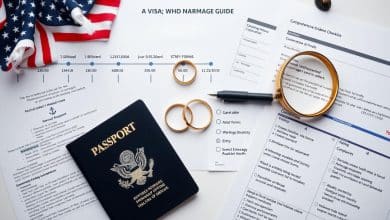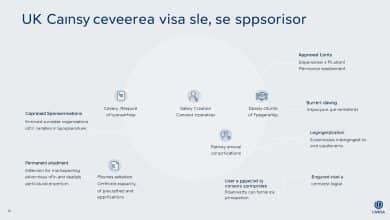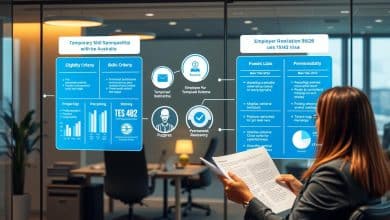Rome, Italy Visa Sponsorship Process: Advantages and a Practical How-To Guide
Italy’s growing economy offers exciting career prospects for skilled professionals worldwide.
With industries like technology, education, and tourism expanding rapidly, international talent has become increasingly valuable. This guide explores practical steps for securing authorized employment while addressing common challenges faced by applicants.
Many professionals seek opportunities in Italy’s dynamic business environment. The country’s updated immigration policies streamline pathways for qualified workers. Applicants must understand both legal requirements and employer expectations to succeed.
Key sectors show particular demand for specialized skills. Technology firms seek software developers, while tourism companies require multilingual staff. Educational institutions often recruit English-speaking instructors to meet growing needs.
This resource outlines timelines, documentation, and strategic approaches for employment authorization. It highlights how to align applications with Italy’s current labor priorities. Readers will discover methods to navigate bureaucratic processes efficiently.
With proper preparation, professionals can access rewarding roles in Europe’s third-largest economy. The following sections provide actionable insights for building a successful career path in Italy.
Understanding Visa Sponsorship in Rome
Navigating employment authorization in Italy requires understanding distinct pathways for EU and non-EU nationals. While European citizens enjoy freedom of movement, others must follow structured procedures to secure legal status.
Overview of the Process
Non-EU professionals typically begin with a confirmed job offer from an Italian company. Employers then request a Nulla Osta document from immigration authorities. This permit serves as proof of labor market need.
Key phases include:
- Employer submits sponsorship request
- Government reviews qualifications and salary standards
- Applicant converts approval into entry authorization
Eligibility and Key Considerations
Candidates must meet specific criteria to qualify:
- Valid employment contract meeting minimum income thresholds
- Relevant academic credentials or professional certifications
- Clean criminal record from all countries of residence
Successful applicants receive a D-Visa for entry, then apply for a residence permit within eight days of arrival. Coordination between employers and foreign workers proves critical, as seen in Italian opportunities through visa sponsorship programs.
Preparing for the Italy Visa Application Process
Successful candidates prioritize organization and attention to detail when gathering materials. Proper preparation reduces delays and increases approval chances. This phase demands careful verification of all paperwork to meet Italian immigration standards.
Essential Documents Required
Applicants must collect these critical items:
- A signed employment contract specifying role details and salary
- Original Nulla Osta plus two copies from the sponsoring company
- Passport with three months’ validity post-visa and two blank pages
Certified translations of diplomas and professional certificates often prove necessary.
“Missing one document can reset the entire process,”
notes Milan-based immigration consultant Giulia Russo. Medical insurance must cover €30,000 minimum with full hospitalization benefits.
Steps to Validate Employer Support
Confirm the company’s legal registration through Italy’s Chamber of Commerce records. Verify their financial capacity to support foreign workers using recent tax filings. Check previous sponsorship success rates through government portals.
Applicants should request written confirmation of accommodation arrangements. This could include rental agreements or employer housing guarantees. Final validation occurs during the consulate interview when officials cross-check all details.
Key Benefits of Italy Visa Sponsorship
Securing authorized employment in Italy unlocks multiple advantages for global professionals. The country’s updated immigration framework supports career growth while offering stability for qualified workers and their families.
Advantages for Applicants
Approved workers receive initial authorization valid for two years, renewable for up to five. This extended timeframe allows professionals to build expertise in sectors like engineering or tech while contributing to Italy’s economic development.
Family reunification policies enable employees to bring immediate relatives, with access to public education and healthcare. After five consecutive years, individuals become eligible for permanent residency – a pathway to broader European opportunities.
Employers partnering with the Ministry of Interior accelerate permit approvals. Qualified candidates under these agreements often secure residence permits within 30 days of job offer submission. This efficiency reduces relocation delays significantly.
Additional benefits include:
- Integration into Italy’s social security system covering pensions and unemployment
- Networking opportunities with multinational corporations and innovation hubs
- Reduced university tuition fees for dependents
These provisions create a supportive environment for international talent aiming to establish long-term careers in Europe’s third-largest economy.
Step-by-Step Guide to Securing Your Italy Work Visa
Securing employment authorization in Italy involves a structured collaboration between employers and foreign workers. This phase determines how quickly professionals can begin contributing to Italian businesses while complying with national regulations.
Employer Applications and Nulla Osta
Italian companies initiate the process by submitting a Nulla Osta request to provincial immigration offices. Employers must prove they’ve advertised the position locally for at least 30 days without finding qualified EU candidates. Required corporate documents include:
- Recent financial statements showing stability
- Detailed job description matching salary standards
- Proof of unsuccessful local recruitment efforts
Approval timelines vary between 4-8 weeks. Delays often occur if provinces require additional evidence of labor shortages.
Filing the Employee Visa Application
After receiving the Nulla Osta, workers complete these steps:
- Book appointments at their nearest Italian embassy consulate
- Submit original documents with certified translations
- Provide biometric data during in-person interviews
Embassies typically process applications within 3-6 weeks. Successful applicants collect their work visa within 30 days of approval. Delayed pickups may require restarting the process.
From job offer to relocation, the entire procedure spans 3-6 months. Employers and employees should maintain regular communication to address unexpected requirements promptly.
Navigating Documentation and Employer Requirements
Successful employment authorization hinges on meticulous preparation of corporate and personal records. Both employers and applicants must coordinate efforts to meet strict standards set by Italian authorities. Missing even one element can reset approval timelines by months.
Corporate Verification Essentials
Companies must submit:
- Business registration certificates proving legal operation
- Three years of audited financial statements
- Organizational charts demonstrating role necessity
Employers also provide evidence of local recruitment attempts through job board postings and agency contracts. These materials justify hiring non-EU professionals under Italy’s labor market test rules.
Applicant Documentation Checklist
Workers need:
- Academic diplomas with certified Italian translations
- Bank statements showing €5,000+ in available funds
- Medical insurance covering €30,000 in care
“Proper document authentication prevents unnecessary delays,”
Criminal background checks require apostille stamps from countries of residence. Applicants from Nigeria must obtain police clearance certificates through the Force Criminal Investigation Department. Regional processing centers often experience 6-8 week backlogs.
Final submissions to the Italian embassy consulate include original and duplicate copies. Digital pre-checks through employer portals help identify errors before formal filing. Common rejection triggers include expired paperwork or mismatched employment dates.
Timeline and Practical Considerations for Visa Processing
Efficient planning requires awareness of critical timelines governing employment authorization procedures. Delays often occur when applicants underestimate regional variations or miss strict deadlines. Strategic preparation helps navigate quotas and renewal protocols effectively.
Understanding Processing Durations
Standard authorization takes three to six months from application submission. Specialized categories like the EU Blue Card often process faster due to priority handling. Northern provinces like Lombardy complete reviews quicker than southern regions due to staffing differences.
Important Deadlines and Renewal Options
Workers must visit a post office within eight days of arrival to request residency permits. Renewals require updated contracts and tax records, allowing extensions up to five years total. Missing deadlines risks legal penalties or revoked status.
Managing Quotas and Compliance Issues
The Italian government allocated 82,705 permits for 2023 – an 18% increase from previous years. Applications submitted early avoid quota exhaustion common in peak seasons. Regular communication with employers prevents compliance issues caused by role changes or documentation errors.
“Submitting renewal requests 90 days before expiration prevents gaps in legal status,”
Applicants should track regional quota allocations through official portals. Digital pre-submission checks reduce rejection risks from expired paperwork or mismatched details.
Living and Working in Italy: Cultural and Practical Insights
Building a life in Italy involves understanding both workplace dynamics and daily living essentials. Professionals often find success by blending adaptability with local knowledge. These insights help create smoother transitions for those pursuing careers abroad.
Cultural Workplace Differences and Expectations
Italian workplaces prioritize personal connections over rigid timetables. Meetings may begin with casual conversations about family or weekend plans. Decision-making typically flows from senior leadership, requiring patience during approval processes.
Work-life balance receives strong emphasis, with many businesses closing for extended lunch breaks. Punctuality remains flexible in social settings but gains importance in formal corporate environments. Learning basic Italian phrases demonstrates respect and improves team integration.
Housing, Healthcare, and Daily Life Essentials
Foreign workers access Italy’s national healthcare system (SSN.italy.it) after obtaining residence permits. Many employers supplement this with private insurance for faster specialist access. Generous benefits include 20+ annual leave days and 11 months of parental leave.
Urban housing often requires self-supplied appliances like refrigerators or washing machines. Notarized rental agreements and security deposits up to three months’ rent are standard. Families appreciate Italy’s affordable public education system and community-oriented neighborhoods.
Understanding these cultural and logistical factors helps professionals thrive while working in Italy. Balancing career goals with local customs creates rewarding long-term opportunities.
For more information, explore the official visa website mentioned in this article:
You will be redirected to another website
FAQ
What documents are needed for an Italy work visa application?
Applicants must provide a valid passport, proof of accommodation, a job offer letter, the employer’s nulla osta (work authorization), and financial stability evidence. Additional items like health insurance and a clean criminal record may also be required.
How long does the Italian work visa process take?
Processing typically takes 1–3 months after submitting all documents. Delays may occur if quotas are full or if authorities request extra verification. Employers should initiate the nulla osta early to avoid bottlenecks.
Can family members join visa holders in Italy?
Yes. Immediate family members may apply for a family reunification visa after the primary applicant secures a residence permit. Proof of income and suitable housing must be provided to support dependents.
What is the quota system for Italian work visas?
Italy sets annual quotas for non-EU workers in specific industries. Employers must check availability before applying. High-demand sectors like tech or healthcare often have exemptions or expanded quotas.
How does the nulla osta process work?
Employers submit a request to local immigration offices, proving the role couldn’t be filled by EU candidates. Once approved, the nulla osta allows the employee to apply for a work visa at an Italian consulate.
Are there language requirements for Italy’s work visa?
No formal language tests are mandatory for most work visas. However, basic Italian proficiency is recommended for daily life and integration. Certain professions, like healthcare, may require certification.
What happens after arriving in Italy with a work visa?
Within 8 days, visa holders must apply for a residence permit at the local questura (police station). This permit validates legal stay and is renewable based on employment duration.
Can a work visa lead to permanent residency?
Yes. After legally residing in Italy for 5 years, individuals may apply for permanent residency. Continuous employment and compliance with tax laws are critical for eligibility.
What industries prioritize visa sponsorship in Italy?
Sectors like engineering, IT, healthcare, and tourism often sponsor foreign workers. Startups and companies in regions with labor shortages may also offer streamlined sponsorship processes.
Is health insurance mandatory for visa applicants?
Yes. Applicants must have coverage valid in Italy. Private insurance or enrollment in the national health system (Servizio Sanitario Nazionale) fulfills this requirement.
Published on: 16 de July de 2025

Abiade Martin
Abiade Martin, author of WallStreetBusiness.blog, is a mathematics graduate with a specialization in financial markets. Known for his love of pets and his passion for sharing knowledge, Abiade created the site to provide valuable insights into the complexities of the financial world. His approachable style and dedication to helping others make informed financial decisions make his work accessible to all, whether they're new to finance or seasoned investors.






